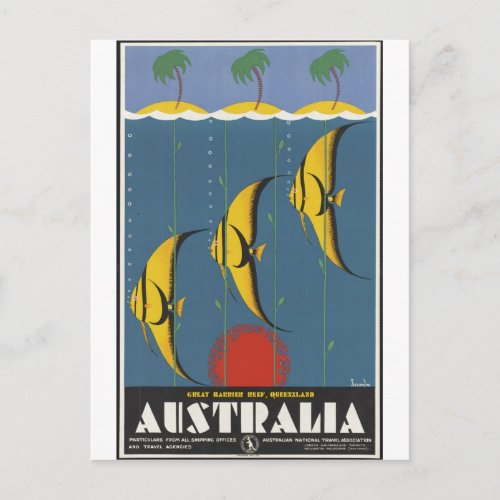Vintage Travel Poster Ad Retro Prints Postcard



Typically posters include both textual and graphic elements, although a poster may be either wholly graphical or wholly textual. Posters are designed to be both eye-catching and convey information. Posters may be used for many purposes, and they are a frequent tool of advertisers (particularly of events, musicians and films), propagandists, protestors and other groups trying to communicate a message. Posters are also used for reproductions of artwork, particularly famous works, and are generally low-cost compared to original artwork. Another type of poster are educational posters, which may be about a particular subject for educational purposes. Many people also collect posters, and some famous posters have themselves become quite valuable, collectors and vintage posters are usually framed and matted. Posters may be any size. Many posters, particularly early posters, were used for advertising products. Posters continue to be used for this purpose, with posters advertising films, music (both concerts and recorded albums), comic books, and travel destinations being particularly notable examples. By the 1890s, poster art had widespread usage in other parts of Europe, advertising everything from bicycles to bullfights. By the end of the 19th century, during an era known as the Belle Époque, the standing of the poster as a serious artform was raised even further. Between 1895 and 1900, Jules Chéret created the Maîtres de l'Affiche (Masters of the Poster) series that became not only a commercial success, but is now seen as an important historical publication. Alphonse Mucha and Eugène Grasset were also influential poster designers of this generation, known for their Art Nouveau style and stylized figures, particularly of women. Advertisement posters became a special type of graphic art in the modern age. Poster artists such as Théophile Steinlen, Albert Guillaume, Leonetto Cappiello and others became important figures of their day, their art form transferred to magazines for advertising as well as for social and political commentary. In the United States, posters did not evolve to the same artistic level. American posters were primarily directed towards basic commercial needs to deliver a written message. However, the advent of the travelling circus brought colorful posters to tell citizens that a carnival was coming to town. But these too were very commercially utilitarian, of average quality, and few saw any real artistic creativity. Many posters have had great artistic merit and have become extremely collectible. These include the posters advertising World's Fairs and Colonial Exhibitions. tour, tourism, art, Travel is the change in location of people on a trip through the means of transport from one location to another. Travel is most commonly for recreation (as part of tourism or to visit friends and family), for business or for commuting; but may be for numerous other reasons, such as migration, fleeing war, etc. Travel may occur by walking or human-powered mode, or through mechanical vehicles, either as private or public transport.[citation needed] Travel may be local, regional, national or international. In some countries, non-local internal travel may require an internal passport, while international travel typically requires a passport and visa. The word originates from the Middle English word travailen ("to toil"), which comes from the Anglo-French word travailler ("travail").[1] A person who travels is called a traveler (US) or traveller (UK). The words holiday or vacation have related meanings in different English-speaking countries and continents, but usually refer to one of the following activities or events: * Official or unofficial observances of religious, national, or cultural significance, often accompanied by celebrations or festivities * A general leave of absence from a regular occupation for rest or recreation * A specific trip or journey for the purposes of recreation or tourism People often take a vacation during specific holiday observances, or for specific festivals or celebrations. Vacation or holidays are often used spent with friends or family. A person may take a longer break from work, such as a sabbatical, gap year, or career break.


